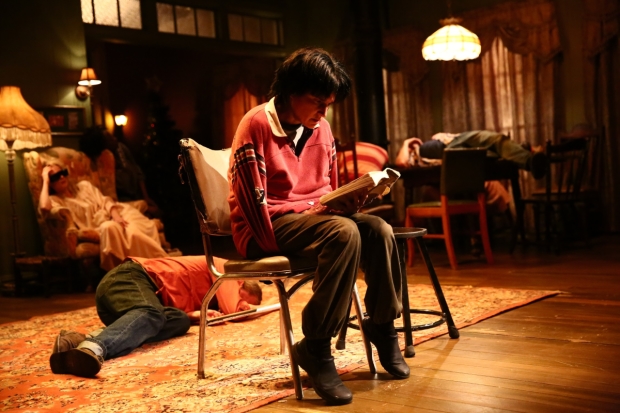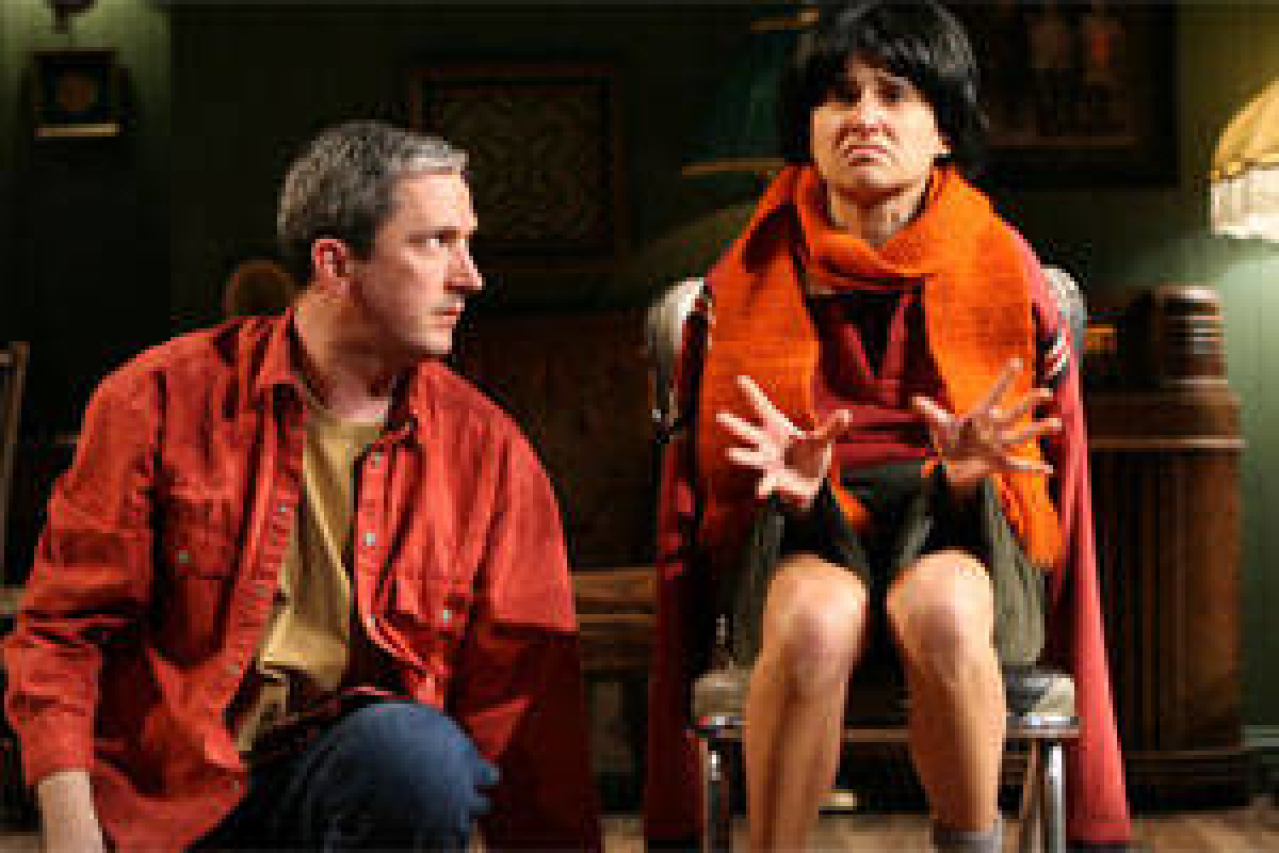The Sound and the Fury

(© Paula Court)
Literary mavens won't want to miss Elevator Repair Service's The Sound and The Fury, which is now enjoying a revival at the Public Theater. The show (which debuted in 2008 at New York Theatre Workshop) is sure to offer fresh insights to devotees of William Faulker's famously dense novel. All others will likely walk away completely perplexed, but perhaps delighted in that confusion.
Elevator Repair Service is most notable for its seven-hour stage adaptation of F. Scott Fitzgerald's The Great Gatsby. Titled Gatz, that show features one performer reading the entire novel aloud while the company acts it out. The Sound and the Fury follows the same formula, but blessedly limits itself to the first chapter ("April Seventh, 1928") of William Faulker's lengthy novel about the fall of a prominent Mississippi family.
Faulkner's title is a reference to the most famous soliloquy in Shakespeare's Macbeth, in which the titular Scotsman ruminates on life, "It is a tale told by an idiot, full of sound and fury, signifying nothing." "Idiot" is a rather indelicate way to refer to Benjy, the mentally challenged Compson brother through whom this part of the novel is told. It is undeniable, however, that this story, which leaps across time and space with little reverence for chronology or context, occasionally seems to signify nothing. As if Faulkner's source material were not challenging enough, ERS has added layers of complication by having its actors regularly switch roles while setting the story within a new frame.
Just as Gatz took place in a bland office, director John Collins sets The Sound and the Fury at a sleepy Christmas party. David Zinn's set looks like a great-grandmother's parlor in rural Mississippi. A 1940s radio occupies center stage, with thinly upholstered furniture and halogen floor lamps spread across the hardwood floor. A lopsided Christmas tree hides upstage left. Members of the cast play cards, stack dishes, stare at the wall, and get drunk, so bored out of their gourds are they. They're so listless, in fact, that one of the guests begins reading The Sound and The Fury for entertainment.
This is Benjy (an appropriately twitchy Susie Sokol), whom costume designer Colleen Werthmann iconically outfits in an old football shirt and a mop of black hair. As Benjy reads, others join in, acting out the parts and swapping roles with wild abandon. Since the book's text remains mostly intact, the actors adopt an affected manner of speaking. A typical line reads, "'We're going to the cemetery.' Mother said." As unnatural as it sounds, it actually serves the purpose of making character shifts less confusing since the actors always identify themselves with dialogue tags. It often feels like an audio book onstage.
Matt Tierney's aggressive sound design reinforces this style. While much of it enriches the story (the swing of golf clubs, the clatter of china), other moments are more perplexing. A whining vocalization (possibly meant to signify Benjy's cries) sounds like the Islamic call to prayer, making it seems as though memaw's house is situated across the street from a mosque.
While the design and staging regularly throw us off the scent, the performances get at a deeper truth. As Caddy, the sotto voce Tory Vazquez embodies the gentleness and basic goodness that makes her Benjy's favorite sibling. Greig Sargeant is like a general playing the Compson's loyal housekeeper Dilsey. She needs to hold this ragtag army together if she's ever going to survive. Sokol endures lengthy physical restraint and contortion as Benjy, as the other members of the cast toss him from scene to scene (none of which are in chronological order). It very quickly becomes clear that this is one of those family gatherings where we rehash ancient feuds and adult children live in a state of suspended childhood.
Those not already familiar with the novel may be left totally in the dark by The Sound and The Fury. Luckily, this ERS show is stimulating enough to inspire you to have fun making up your own story, completely divorced from Faulkner's tale. Audiences should beware, however: The show runs two hours and 15 minutes, with no intermission. You might want to use the facilities beforehand. No matter how rapt you become in the world of Faulkner and ERS, a needy bladder will always win the day.











